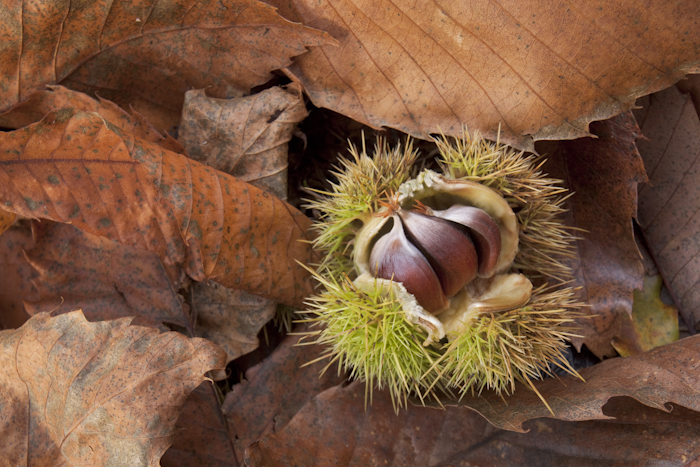Although it is quite late in the season to be foraging for sweet chestnuts (Castanea sativa), there were still a good number of edible nuts to be found during the first week of November. Ecclesall Woods is my favourite location for harvesting these delicious nuts. There are many large sweet chestnut trees in the woods, many of which were planted in the 1850s.

Sweet chestnuts are actually a Southern European species that were introduced into the woods as a fast growing alternative to native oak, with which it shares a high tannin content. This makes it a durable timber suitable for uses where a degree of water-resistance is required.
Luckily for us, many of these trees are now large specimens that produce an abundance of delicious nuts. Sadly some sweet chestnuts in Ecclesall Woods have been affected by Phytophthora aka ink disease on account of the dark spot-like stains that are seen on some trees, notably on beech. It is harder to see the early stages on the rough-barked chestnuts.
Should you go looking for chestnuts, remember to leave some for the wildlife. When gathering these I saw not one but two wood mice lurking in nearby brambles – it is not just the squirrels who like a nibble. Only take the big and firm nuts. If they are soft they are past their best; too small and they are a pain to shell.

